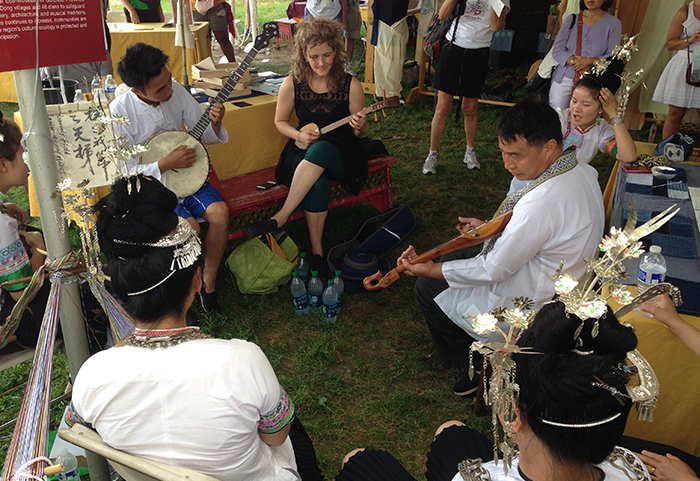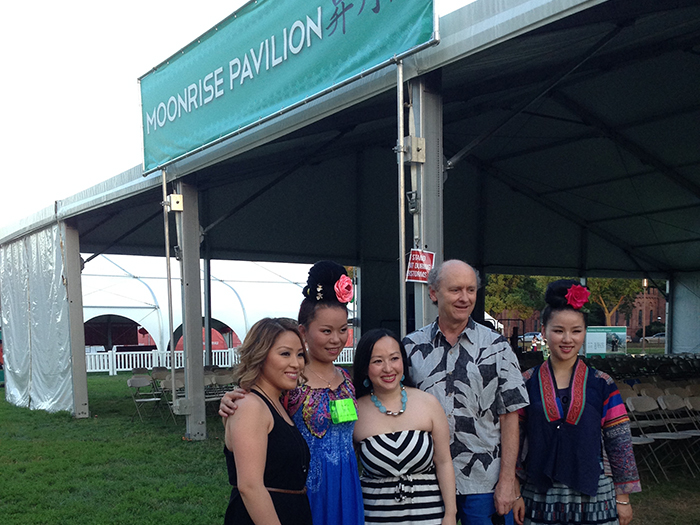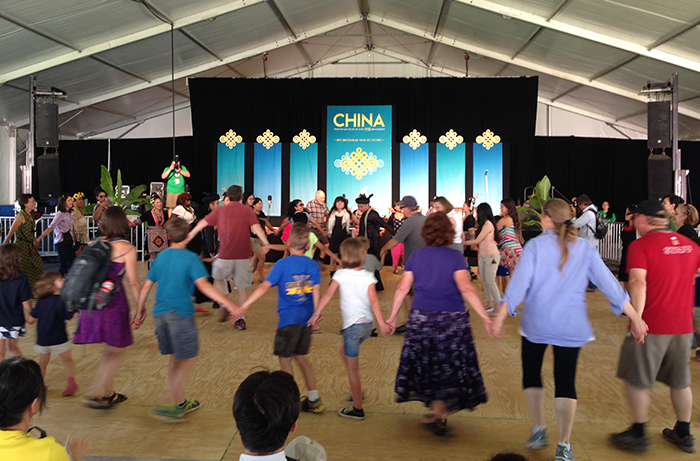My Top Three Festival Moments (So Far)
Seeing the Folklife Festival coming to life is nothing like seeing a show open. In theater, when curtain is up, nothing gets to be changed anymore on stage. At the Festival, when the gates open, everything is changing with every audience member’s interaction with the people and the objects. The craziest and the most amazing thing to me is that nothing could be pre-scripted or rehearsed. It has a life of its own.

1. Jam Session with Abigail Washburn and Dimen Dong Folk Chorus
American bluegrass banjo player Abigail Washburn sat down at the Textiles tent where the Dong chorus demonstrates paper making, weaving, and botanic dyes when they are not performing. With Abby on her banjo and Wu Zhangshi on his Dong pipa, they started making music together.
The Dong people are known for singing songs of nature sounds. Abby and Wu soon discovered that they both have songs about the cuckoo bird in their own cultures. When the two songs, a Dong polyphonic version and an Appalachian folk version, merged into one, when they both sang “cuckoo,” they formed a bridge between cultures, and it was a magical moment to witness.
At the Rinzler Memorial Concert, Abby invited the Dong chorus on stage to collaborate on this song. It won a standing ovation from an overflowing audience.

2. Hmong Meets Miao
The Miao ethnic group is one of the fifty-six ethnic groups in China, known as Hmong in the United States. There are about 200,000 Hmong people who came from Southeast Asia years ago, who share the same ancestor of the Chinese Miao. The China program features a variety of Miao arts, including song and dance, lusheng playing and making, batik and botanic dyes, and embroidery.
After an evening concert, two Hmong girls came up to the Miao performers and started to speak to them in their Hmong language. After comparing words and dialects, it turned out that the only common word they both use is for “drinking wine.” Couldn’t be more appropriate for a celebration of reunion!

3. Getting on the Dance Floor
During a performance at Moonrise Pavilion, the audience joined in the circle dance with the Miao song and dance group. After the dance, the audience was obviously happy, but I also saw the performers give their audiences appreciative gestures. To many Chinese artists, this is the first time they have met with an American audience. Appreciation is mutual.
Jing Li is the program coordinator for China: Tradition and the Art of Living.

